Over the years, we’ve seen designers and homeowners do all kinds of creative things with their staircases which, historically aren’t the most exciting part of a home. One common way people choose to spice up their boring staircases is with stair runners.
There are a number of reasons to install carpeting on stairs. It reduces noise made by people stomping up and down the stairs, and it adds a finished look to a stairway. Plus, in some circumstances, it makes stairs safer—for example, young children are more likely to get hurt by falling on hardwood stairs.
Protect Yourself and Your Investment
Speaking of safety, runners don’t always make stairs safer. Older homes with super steep stars and narrow treads are not ideal for carpet. Stairs with deeper treads are preferable. Obviously, to be safe, stair runners should not be made of slippery materials such as silk or linen and must be properly installed with no loose corners to create tripping hazards.
Runners aren’t just here to protect against falls though. They can also protect the stairs themselves! Foot traffic can mar the finish on wooden treads and leave scuff marks on painted risers (the vertical part of the stairs, between the treads). Runners protect both treads and risers from wear and tear. Still, the look is more suited to traditional homes than modern ones. And bare wood steps are easier to keep clean than carpeted stairs. Let’s be honest, nobody loves vacuuming stairs.
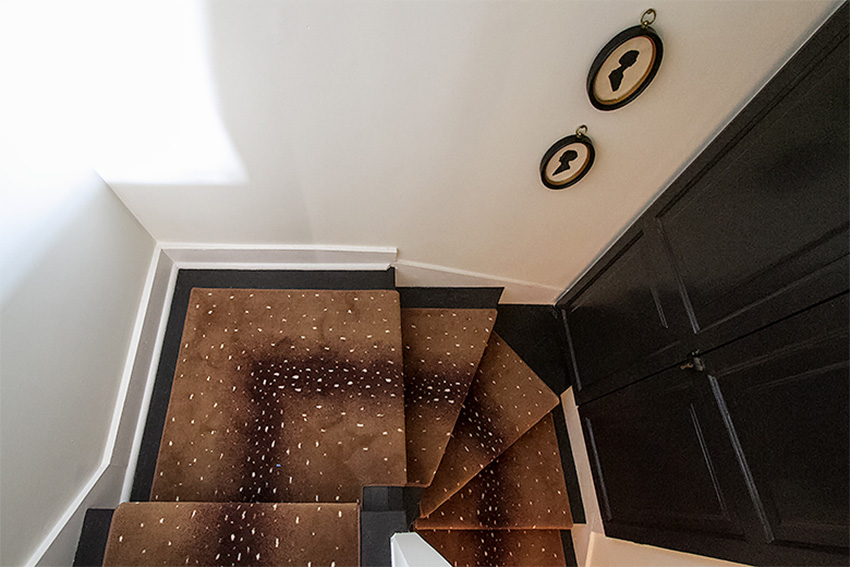
Colors and Patterns
When it comes to aesthetics, wool delivers superior beauty, on top of all the usual benefits of wool carpet. With a runner, you don’t want to go too light or too dark. Darker carpet shows all the lint, while light-colored carpeting shows dirt and soiling. Combat both ends of the spectrum with a nice medium tone for best longevity.
As for the pattern, if there’s a chance to have some fun on the stairs, go for it. Vertical stripes work great to elongate the space. However, be careful with bold, contrasting, geometric patterns. They can be dizzying, and make stairs hard to navigate. If you can’t figure out where your next step is, your runner isn’t doing anything for your stair safety.
Another thing to keep in mind with patterns is alignment. If you need to match the pattern so each step looks the same, you could end up with a lot of waste which will increase costs.

Installation
Most homeowners aren’t aware that there are two styles of installation for stair runners: The Waterfall, in which the runner flows over the stairs and is tacked down at the base of each step; and the Hollywood, where the runner is tacked down around the tread and fits close to the risers.
The decision between the two usually depends on how your stairs are constructed. If there’s a quarter-round molding under the nose of the tread, you’ll go with the Waterfall so the carpet falls gracefully over that edge. If there is no molding in the way, you can go with a tighter fitting installation, in the Hollywood.
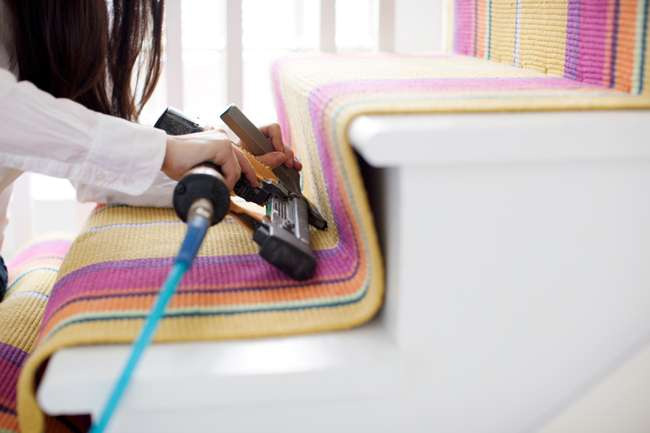
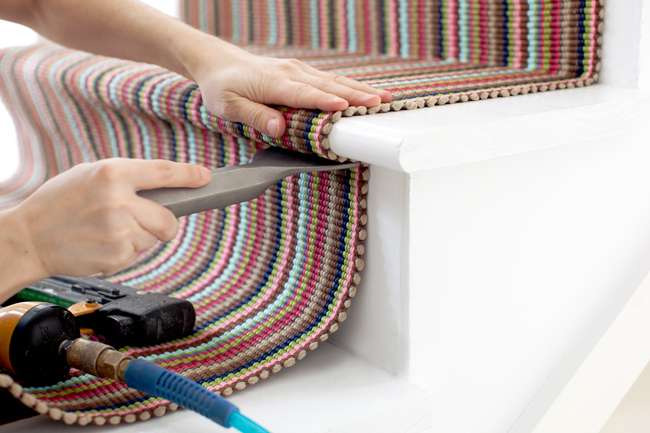
Hidden staples typically hold the padding and runner securely in place, though sometimes a tackless strip is used. This is a piece of wood that runs the width of the steps and is studded with sharp nails or tacks. Typically, stair runners are installed over a padding or underlay, which both reduces noise and protects the carpet from wear. As bonus, this also provides additional cushioning and helps stairs feel softer underfoot—great for babies navigating on their hands and knees.
And what about those rods that hold stair runners in place? If you’re going for a Cinderella moment on a grand staircase, they’ll definitely get you there, but they’re actually purely decorative.
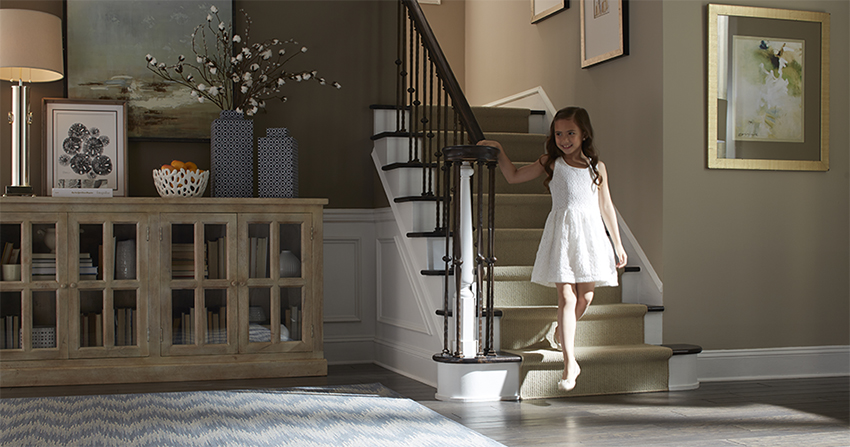
Standard Sizes
Stair runners are made in standard widths. The most common sizes, for example, are 24 inches, 27 inches, and 33.5 inches. But you can also have runners made to order. People often buy broadloom and have it cut to size. In that case, you’ll also need to have the edges bound.
In a standard three- to four-foot-wide staircase, you’ll want to leave about three to four inches of wood exposed on either side of your runner. But if your stairs are wider, you can adjust your runner proportionally on each side.




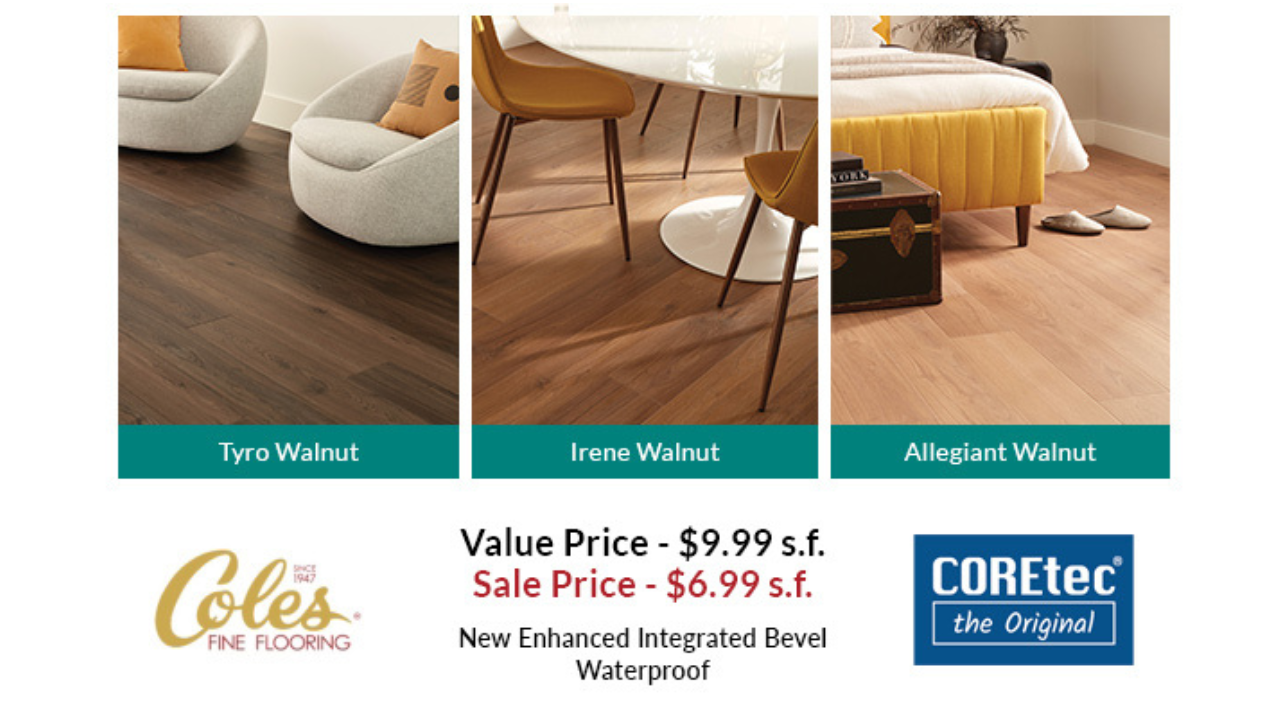

 Prelude Version 2.1
Prelude Version 2.1